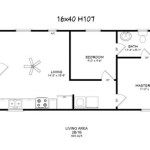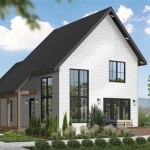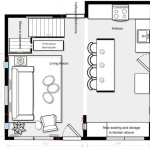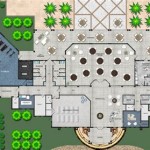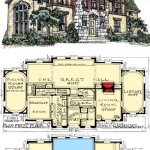Plans for a Big Dog House
Building a large dog house requires careful planning and consideration of the dog's size, breed, and local climate. A well-designed structure provides comfort, protection, and a sense of security for the canine resident. This article will outline key aspects of planning for a large dog house project.
Size and Dimensions: The dog house must accommodate the dog comfortably. It should be large enough for the dog to stand, turn around, and lie down without restriction. Measurements should be taken of the dog's length from nose to tail base, height from the ground to the top of the head, and width at the shoulders. Adding extra space to these measurements ensures comfortable movement within the structure. For giant breeds, consider a floor space of at least 4ft x 6ft.
Material Selection: Durable, weather-resistant materials are crucial for longevity and the dog's well-being. Pressure-treated lumber is a common choice for framing due to its resistance to rot and insects. Exterior-grade plywood or cedar planks provide effective siding. Insulation can be added between the framing and siding in colder climates. The roof should be sloped to allow for water runoff and can be constructed using asphalt shingles, metal roofing, or other weatherproof materials.
Design and Features: The design should prioritize functionality and the dog's comfort. An elevated floor helps to keep the interior dry and insulated from the ground. A sloped roof provides adequate drainage and prevents water accumulation. An overhang extending beyond the entrance helps to shield the dog from rain and sun. A removable roof facilitates cleaning and access to the interior. Consider adding a door flap made of heavy-duty canvas or plastic to further protect against the elements, especially during colder months.
Ventilation: Proper ventilation is essential for maintaining a healthy environment inside the dog house. Vents should be placed strategically to allow for air circulation without creating drafts. High and low vents on opposite sides of the structure can encourage natural airflow. Ensure the vents are covered with mesh or screening to prevent insects and pests from entering.
Location and Placement: Choosing the right location for the dog house is critical. Select a sheltered spot that offers protection from prevailing winds, excessive sun, and rain. A slightly elevated area can help with drainage. Consider the dog's preferences and ensure the location provides a clear view of the surrounding area. Proximity to human activity can provide the dog with a sense of security and connection.
Building Plans and Blueprints: Detailed plans and blueprints are invaluable for a successful project. Numerous free plans are available online, or custom plans can be created to meet specific needs. Accurate measurements and a comprehensive materials list are crucial. Blueprint software can be helpful for visualizing the finished structure and ensuring accurate construction.
Construction Process: The construction process typically begins with building the floor frame and then attaching the wall frames. Sheathing is then applied to the exterior walls, followed by roofing. Insulation can be added before the interior walls are finished. The door and any additional features are added last. Ensure all components are securely fastened and weatherproofed.
Climate Considerations: Adjustments to the design and materials may be necessary based on the local climate. In colder climates, thicker insulation, a smaller doorway, and a door flap are recommended. In warmer climates, adequate ventilation and shade are crucial. Consider using light-colored materials to reflect sunlight and minimize heat absorption. Raising the dog house off the ground can also improve airflow and prevent heat buildup.
Maintenance and Cleaning: Regular maintenance helps to ensure the longevity of the dog house and provides a healthy environment for the dog. Cleaning should be done regularly to remove dirt, debris, and parasites. Check for any signs of damage or wear and tear, and make necessary repairs promptly. Re-apply weatherproofing sealant as needed to protect the wood from the elements. Replace bedding regularly to maintain hygiene.
Budget and Cost: The cost of building a large dog house can vary depending on the size, materials, and features. Creating a detailed budget before starting the project helps to manage expenses. Consider sourcing materials from local suppliers or repurposing existing materials to reduce costs. Factor in the cost of tools, hardware, and any additional features, such as insulation or a door flap.
Regulations and Permits: Check local building codes and regulations before starting the project. Some areas may require permits for outdoor structures. Ensure the dog house complies with any size or placement restrictions. Contact the local authorities for information on specific requirements.

Large Dog House Plans Free Construct101

Extra Large Dog House Plans

Large Dog House Step By Plans Howtospecialist How To Build Diy

Top 10 Of The Coolest Dog House Designs 犬小屋 Diy 犬小屋の計画

14 Diy Dog Houses How To Build A House Plans Blueprints

Large Dog House Plans Gable Roof Style Doghouse 90304g Pet Size Up To Design

Large Dog House With Porch Plans Free Garden How To Build Projects

Large Dog House Plans Construct101
:strip_icc()/Beautiful-Pallet-Dog-House-with-Veranda-1-5a202f90494ec90037893a82.jpg?strip=all)
14 Free Diy Dog House Plans Anyone Can Build

How To Build A Dog House Blueprint Something New Diy Plans Big


